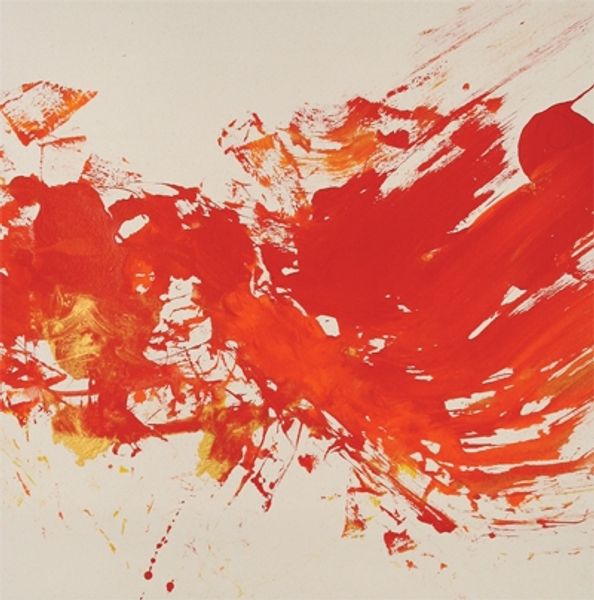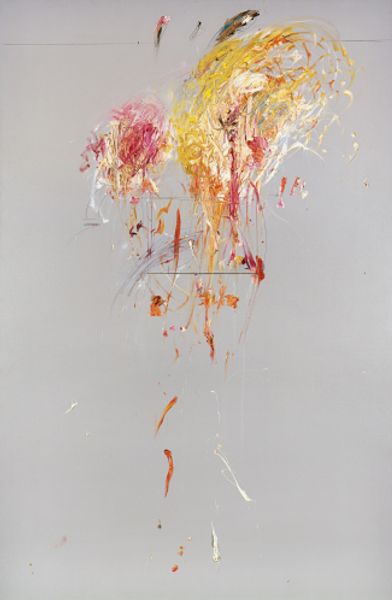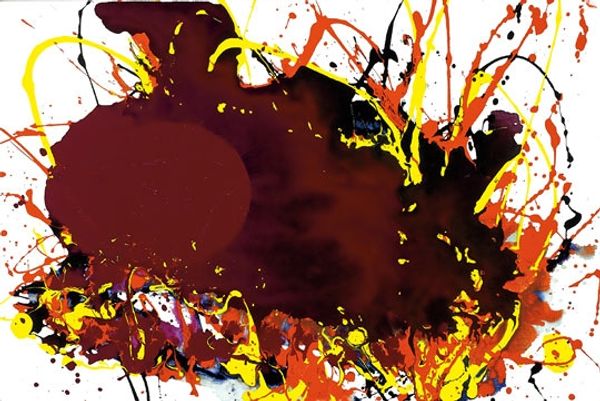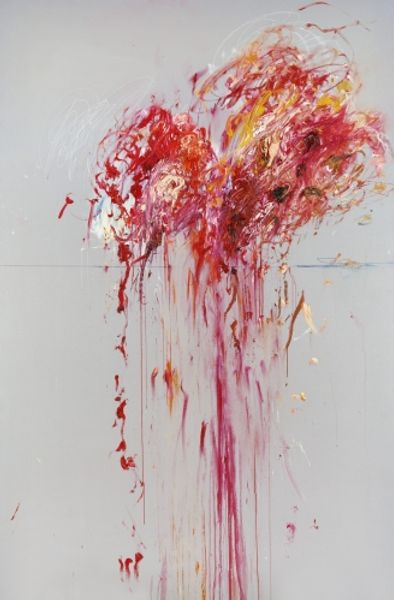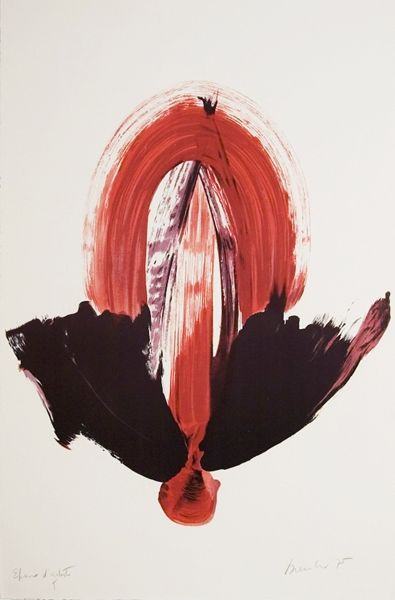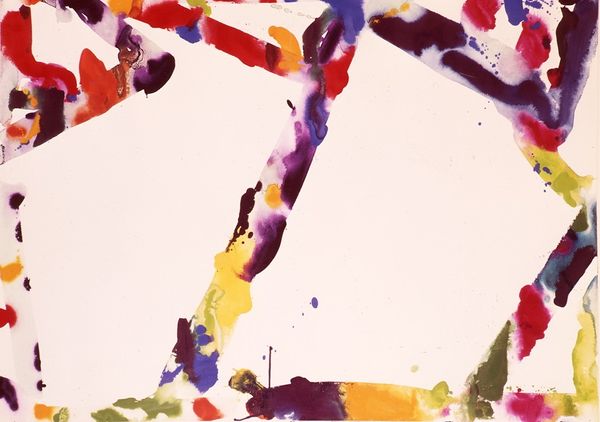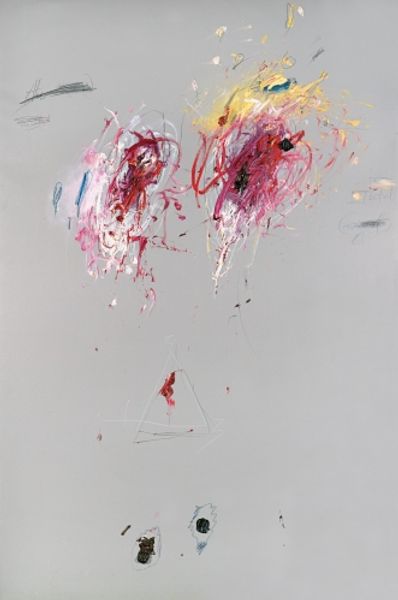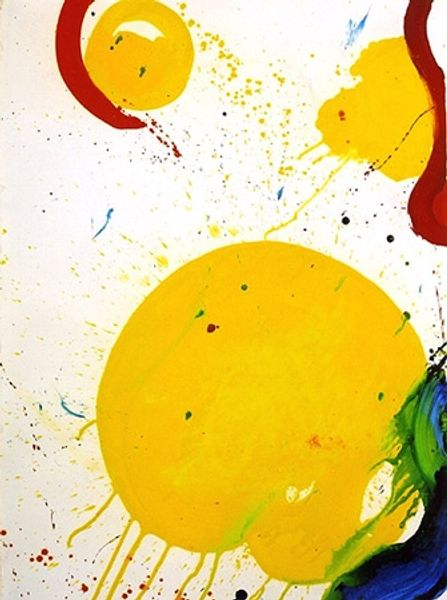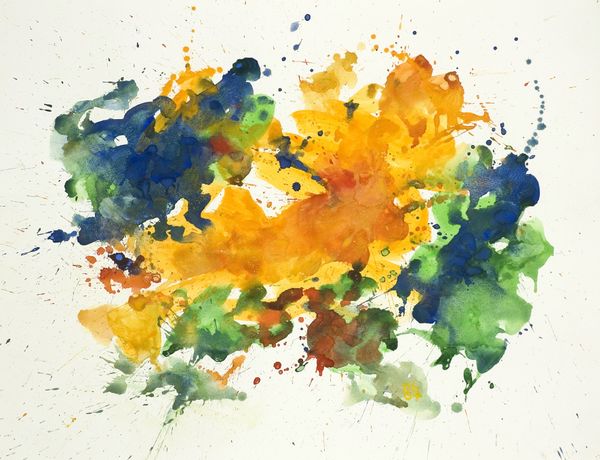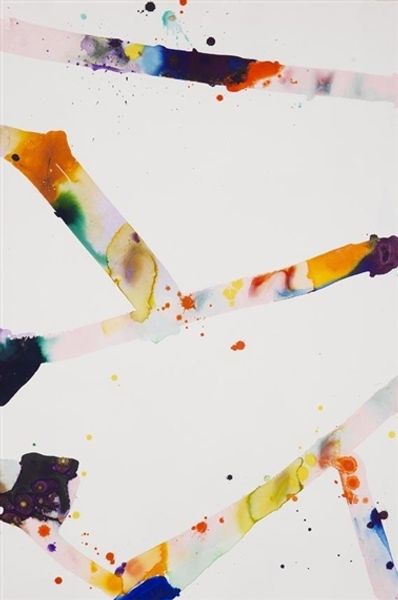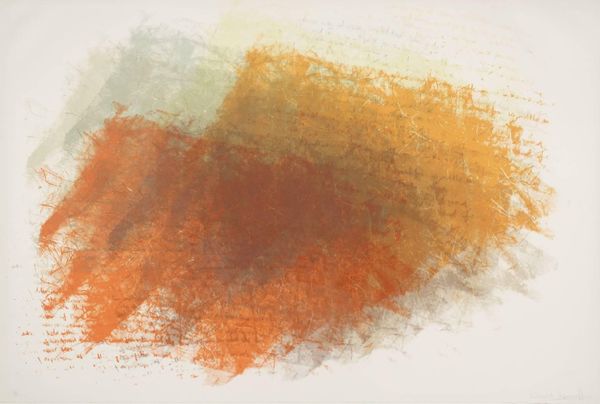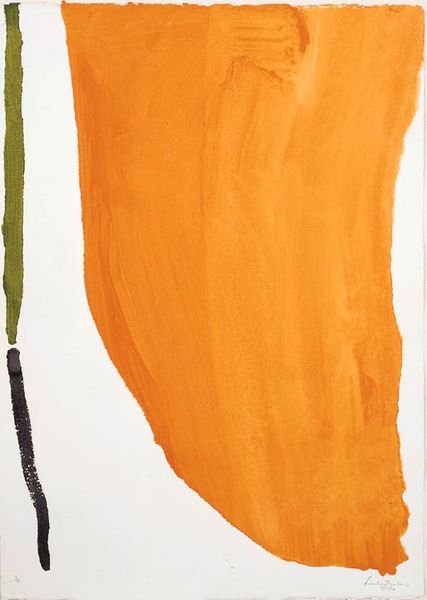
painting, acrylic-paint
#
abstract-expressionism
#
painting
#
acrylic-paint
#
form
#
abstraction
#
orange
Copyright: Antoni Tapies,Fair Use
Editor: So, here we have Antoni Tapies’s “Untitled (Flame and Mirror)” from 1967, an acrylic on canvas. The bold orange against the white immediately grabs your attention, and the texture looks quite thick in places. It’s almost…violent? What’s your take on it? Curator: The violent brushstrokes, as you say, were pretty on-trend during the '60s. You can see echoes of Abstract Expressionism, and given the political and social unrest that defined the decade globally, it is easy to imagine these abstract shapes capturing a moment in history. Tapies, like many artists of the time, engaged with the materials themselves to convey feelings that were unspoken in society. It seems a painting reflecting tensions or conflict. Editor: That’s interesting. So, you're saying the *lack* of clear subject matter is, in a way, making a statement itself? About feelings that were unspoken? Curator: Exactly. In Franco's Spain, where censorship was rife, artists like Tapies had to find ways to express dissent and social commentary indirectly. Do you see other ways he might be doing that here? The contrast in colours for example, or perhaps the way the orange 'flame' seems contained by that white form, or ‘mirror’ as the title suggest, if we follow that literal path. Editor: Well, I do wonder about the title. ‘Flame and Mirror’ seems contradictory. Fire, yet contained or reflected back? Curator: And that tension could be exactly the point. Reflecting the controlled society around him. Perhaps the flame *is* Spain, and the mirror, an attempt at restraint. Consider also how art institutions themselves shaped what could and couldn't be shown at that time. Galleries and museums inadvertently became part of this complex negotiation of power and expression. Editor: That gives me a lot to consider. Thanks! It is interesting how something that seems so free, actually becomes powerful knowing its background. Curator: Indeed. The power lies in decoding that context. Something I will take away is its modern appeal - does this ‘control’ speak of modern constraints too?
Comments
No comments
Be the first to comment and join the conversation on the ultimate creative platform.

